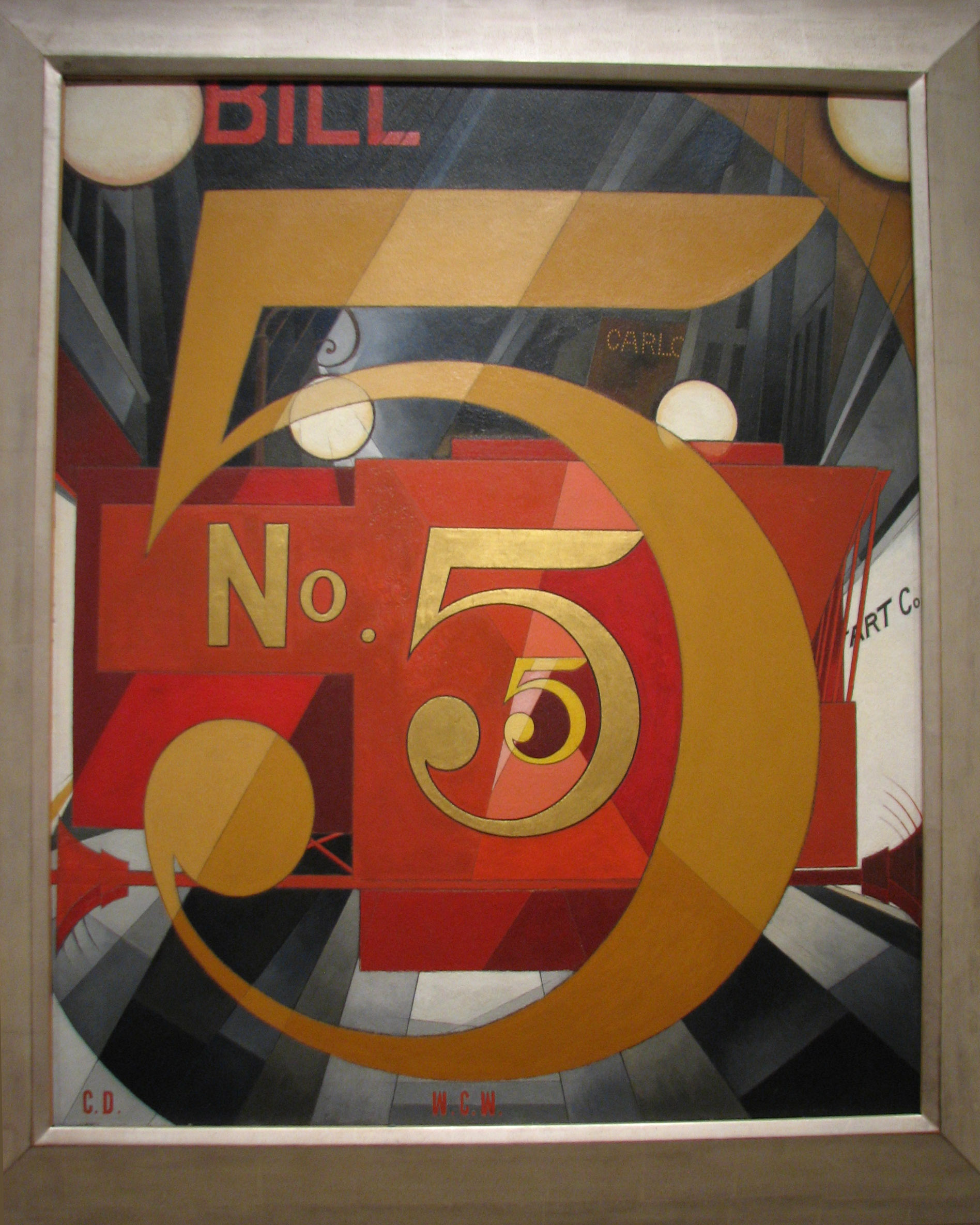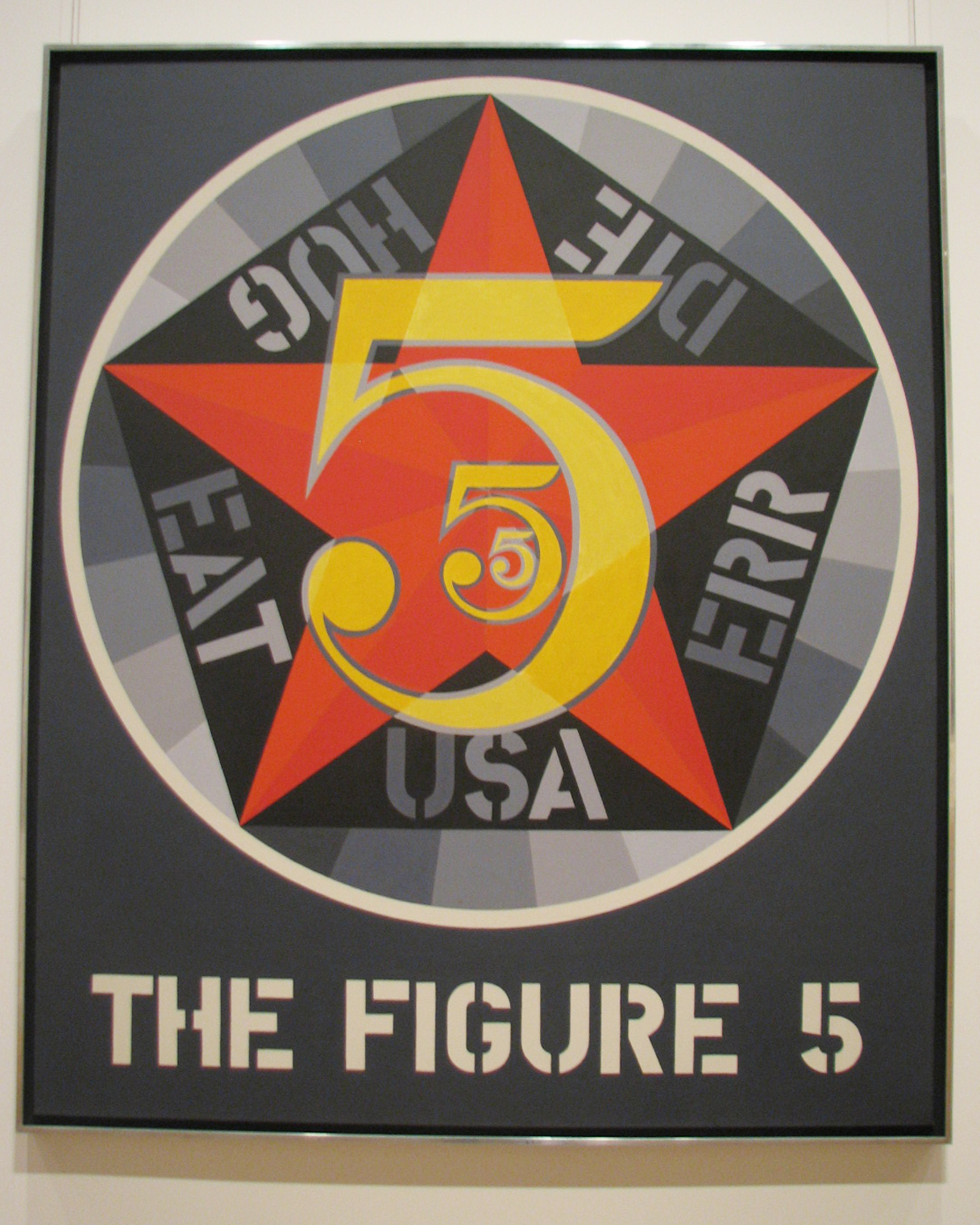
Wednesday, October 21, 2009
"A Tale of Two Paintings"
3:26am
It's not the sort of thing I usually like. But I found it visually striking, the pentagram with the number five, five points of the pentagram and those mysterious 'wordlets' around it. The info card said it was inspired by another artist's painting which had been inspired by a poem:
(From info card)
"Indiana created five paintings in this series, all of which contain three-letter words that conjure images of billboards, carnival signs, or targets. The three fives suggest the swelling of the "siren howls" as the fire engine roars past. But the numbers also symbolize the thirty-five years that lay between Indiana's painting and Demuth's earlier version. They lead us back to the years when Demuth and Williams were creating modern art and poetry for the "American Century." With The Figure Five, Indiana acknowledged his debt to earlier artists whose work, like his, merged high culture and low."
Five 'wordlets', five gradiations of gray at each pentagram side, the colors, it's visually appealing.
I'd snapped it's photo, and then forgot about it. Nearly two years later, when I was at the Metropolitan museum, I saw a similar painting. When I saw the Met's painting, I'd remembered the big gold 'five':
(From info card)
It wasn't until I hunted up both of the 'golden five' paintings and placed them side by side with the info nearby that I realized their connection. In my mind, it had all grown hazy. The Met's painting by Demuth is the one that inspired Robert Indiana.
The rushing of the truck, the rushing of time, I find ominous the further info at the Museum website, "When Demuth died at age fifty-one, after suffering from diabetes for much of his life, an important and prolific career was cut short after only twenty years."
When he created 'Figure 5 in Gold', he had only seven more years to live. He of course couldn't have known that then. Time rushes by, often unheeded. Perhaps Indiana was referring to this as one of the three letter 'wordlets' in his painting is the word 'die'.
"Robert Indiana based this work on Charles Demuth's famous painting of 1928, The Figure Five in Gold, which was itself based on William Carlos Williams's poem "The Great Figure," scribbled on a sheet of paper while he was walking in Manhattan:
Among the rain
and lights
I saw the figure 5
in gold
on a red
fire truck
moving
tense
unheeded
to gong clangs
siren howls
and wheels rumbling
through the dark city.

The Figure 5 in Gold
Charles Demuth (American, 1883–1935)
Oil on cardboard, 1928
35 1/2 x 30 in. (90.2 x 76.2 cm)
Alfred Stieglitz Collection, 1949 (49.59.1)
"This is one of eleven abstract portraits Demuth made between 1923 and 1929. In it, he paid homage to a friend, the poet William Carlos Williams. Rather than painting a literal likeness, Demuth arranged a composition of shapes and symbols related to Williams. Included are the poet's initials and the names "Bill" and "Carlo[s]." The painting's colors and imagery come directly from William's poem "The Great Figure," which describes the experience of seeing a red fire engine with the number 5 painted on it racing through the city streets:
Among the rain
and lights
I saw the figure 5
in gold
on a red
fire truck
moving
tense
unheeded
to gong clangs
siren howls
and wheels rumbling
through the dark city.
